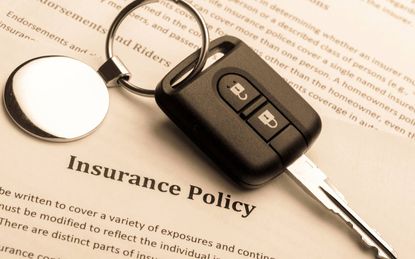Six Steps to Get Lower Car Insurance Rates
Shopping around for auto insurance may not be your idea of fun, but comparing prices for a new policy every few years — or even more often — can pay off big.


Shopping around for auto insurance may not be your idea of fun, but comparing prices for a new policy every few years — or even more often — can pay off big. Premiums for two people in the same zip code with the same driving record can differ by a thousand dollars or more. The reason: Companies weigh risk factors or black marks on your record differently. For example, adding a teen driver or moving to a new part of the city can cause your premiums to spike, and some insurers penalize you after a single accident or speeding ticket. But other companies may raise rates more gently when your teen starts to drive, or they may overlook that accident.
Follow these six steps to save money on your insurance without compromising valuable coverage. Keep in mind that insurers typically cut you a break of 5% to 20% for bundling your auto policy with homeowners or other types of coverage, so get quotes for separate policies as well as for your whole panoply of insurance.

1. Assess your coverage
Before you start on your mission to get lower car insurance, study your renewal notice to find out how much coverage you already have so you can compare new policies with the same limits. Also, make sure you have the right amount of insurance. “The biggest mistake I see is underpaying for uninsured motorist coverage,” says Spencer Houldin, president of Ericson Insurance Advisors, in Washington Depot, Conn. He usually recommends a half-million dollars in coverage—far more than many states’ minimums.
For a more accurate quote, know your vehicle’s safety features, how many miles you drive each year, your claims history, and information about accidents or moving violations you’ve had within the past five years. You can find a checklist of details needed to finalize a quote at www.insurance.com.

2. Shop around
Start your search at your state insurance department’s website via NAIC.org. Most states have consumer guides with general advice on how to shop for policies and trim premiums, and some states have a pricing report or rate-comparison table. Before you start calling insurers, look up the complaint ratio for each company you're interested in and avoid insurers with the highest complaint ratios.
When shopping for auto insurance, premium quotations are a useful tool for comparison of different companies’ products. When asking for price quotations, it is crucial that you provide the same information to each agent or company. The agent will usually request the following information: description of your vehicle, its use, your driver’s license number, the number of drivers in your household, the coverages and limits you want.
You can save by comparing rates from insurers at Insurance.com or at InsuranceQuotes. Enter a few details about yourself and your car into the search tool and you’ll receive two to five quotes online or from the insurance companies via phone or email. If you are eligible for a USAA policy because you or a relative has served in the military, you may need to look up its policies separately, says Hunter. For some companies, such as Allstate and State Farm, it may be better to work with a local agent, which you can find through their websites.
You can also review the insurer’s financial strength by searching for the company at A.M. Best’s or Standard & Poor’s website (you will need to register). Insure.com surveys customers about their experience with insurance companies, including claims service (see Best Car Insurance Companies). J.D. Power also rates firms on the shopping process and on claims satisfaction (go to J.D. Power.com ratings and look under “Automotive”).

3. Get all the discounts you deserve
You might be able to lower your premium by locking in more discounts. Look for a list of discounts on your insurer’s website, the buyer’s guide on your state insurance website, or at CarInsurance.com.
Discounts by driver profile
Some insurance companies offer safe driver or good driver premium discounts to those with a good track record when they are behind the wheel. Safe-driving discounts vary, although reducing your premium between 10% and 30% is not unusual.
To qualify for these price breaks, drivers typically need to be accident-free and ticket-free for a period. Each insurer decides how long this time frame will be, although three to five years is typical. Other insurers offer a safe-driving discount to policyholders who agree to have their driving monitored and earn it by showing good driving habits.
Other driver profile discounts that some insurers offer:
- Usage-based discount programs can net discounts of 10%, depending on your driving behavior. Drivers can opt-in to install a monitoring device or use a mobile app from their insurance company that assesses their driving habits
- Good student discount is available to full-time high school or college students who carry a 3.0 (B) grade point average or have achieved other specific academic criteria set by the insurance provider
- Away-from-home student discount for parents or guardians of a full-time student (typically younger than 25) living 100 miles or more from home without a vehicle
- Professional employee discounts are available for certain occupations, such as scientists, lawyers, doctors, firefighters, engineers, law enforcement agents and teachers

4. Give your current insurer one last chance
You might or might not be able to persuade your current insurer to lower your premium because you found a better deal elsewhere. But it doesn’t hurt to ask. If nothing else, you may uncover new discounts that lower your premiums. Plus, your insurer may actually bump up your rate if you appear to be a customer who doesn’t shop around. This practice, known as price optimization, uses personal consumer data to gauge your likelihood of shopping around for policies.
If you are on record complaining about your rate or have recently switched insurers, you may look like a more active shopper. (Note that price optimization is illegal in 20 states and the District of Columbia.)

5. Let your driving speak for itself
A “pay as you drive” program, such as Allstate’s Drivewise, Progressive’s Snapshot or State Farm’s Drive Safe & Save, is ideal for those who drive sedately. Plug a monitoring device into your car or allow a smartphone app to track your driving habits and you can earn discounts of up to 50%, depending on mileage, the times of day you drive, your speed, your braking habits and other factors. You may also get a small discount for signing up.
If you’re willing to go through the hassle of installing the device and sending it back, be sure to ask about the data your insurer is collecting. Most programs promise not to raise rates using collected data (and instead simply withhold any discount). But Progressive, for example, cautions that in certain states, risky driving behavior may result in higher rates.

6. Get advice from an agent
An independent agent who works with multiple insurers can help you compare policies — including those from under-the-radar but reputable companies too small to place ads on sports broadcasts. More importantly, the agent will recommend limits based on your situation, highlight nuances in policies that you might have glossed over and be your advocate in the event of a claim. An agent can also find a policy that will pay for replacement “OEM” parts (equipment made by the original manufacturer, rather than a third party) or cover repairs at your body shop of choice.
To find an independent agent, ask friends and family for recommendations, or search by ZIP code at TrustedChoice.com. Ask prospective agents how many companies they represent, why they represent those companies and how they will help during a claim, suggests Rebecca Korach Woan, CEO of Chartwell Insurance Services, in Chicago. You want someone who will actively reach out to you at renewal time, too, to review coverage. Feel free to tell an agent you want to save money on your policy, but remember that you are getting expertise and hand-holding, so you shouldn’t expect rock-bottom rates. As compensation, agents receive a commission of 10% to 12% paid by the insurer you choose.

You're at the finish line
Before you start comparing insurance quotes, you’ll need to do some thinking. Depending on the type of protection you choose, policy details and limits will determine how much you benefit from coverage. At the same time, these factors contribute to how much you’ll pay in premiums.
Understand that coverage amount, deductibles, exclusions, and other critical factors can change across various insurers. By understanding these limits, you’ll have a clearer idea of what the provider is offering. You can also figure out which policy factors play the most significant role in your situation.
Always examine the fine print before you sign a new policy. Check for variables such as service fees, waiting periods, and other limitations that could impact a future claim.
Related Content
Get Kiplinger Today newsletter — free
Profit and prosper with the best of Kiplinger's advice on investing, taxes, retirement, personal finance and much more. Delivered daily. Enter your email in the box and click Sign Me Up.
Get Kiplinger Today newsletter — free
Profit and prosper with the best of Kiplinger's advice on investing, taxes, retirement, personal finance and much more. Delivered daily. Enter your email in the box and click Sign Me Up.

Donna joined Kiplinger as a personal finance writer in 2023. She spent more than a decade as the contributing editor of J.K.Lasser's Your Income Tax Guide and edited state specific legal treatises at ALM Media. She has shared her expertise as a guest on Bloomberg, CNN, Fox, NPR, CNBC and many other media outlets around the nation.
- Miriam CrossAssociate Editor, Kiplinger's Personal Finance
-
 Stock Market Today: Stocks Enjoy a Bessent Boost
Stock Market Today: Stocks Enjoy a Bessent BoostThe Dow closed at an all-time high as investors welcomed Donald Trump's Treasury secretary nominee.
By David Dittman Published
-
 Why Wall Street Likes Scott Bessent for Treasury Secretary
Why Wall Street Likes Scott Bessent for Treasury SecretaryMarkets are reacting positively to Trump's nomination of Scott Bessent for Treasury secretary. Here's why.
By Joey Solitro Published
-
 Why Does One Claim Jack Up My Insurance After Years of No Claims?
Why Does One Claim Jack Up My Insurance After Years of No Claims?Even loyal customers can be hit with an insurance premium hike after a claim, despite going many years without any claims. There's a reason for that.
By Karl Susman, CPCU, LUTCF, CIC, CSFP, CFS, CPIA, AAI-M, PLCS Published
-
 Why I'm Keeping My Amex Gold Card Even With a Higher Annual Fee
Why I'm Keeping My Amex Gold Card Even With a Higher Annual FeeAmerican Express increased its Gold Card fee, starting October 1, but new perks are here, too. Here's the value one editor sees in the card.
By Alexandra Svokos Last updated
-
 Planning a Summer Road Trip? Here's How to Cut Costs
Planning a Summer Road Trip? Here's How to Cut CostsDrivers expect to spend about $2 per mile on average, or about $1,000 on road trips this summer, according to an Experian survey.
By Kathryn Pomroy Published
-
 Kiplinger Readers' Choice Awards 2024: Auto Insurance Companies
Kiplinger Readers' Choice Awards 2024: Auto Insurance CompaniesKiplinger Readers' Choice Awards The results of the Kiplinger Readers’ Choice Awards' best auto insurance company category. Our awards celebrate the very best products and services in personal finance.
By Emma Patch Published
-
 The Best Places to Retire in New England
The Best Places to Retire in New Englandplaces to live Thinking about a move to New England for retirement? Here are the best places to land for quality of life, affordability and other criteria.
By Stacy Rapacon Last updated
-
 What Does Medicare Not Cover? Seven Things You Should Know
What Does Medicare Not Cover? Seven Things You Should KnowHealthy Living on a Budget Medicare Part A and Part B leave gaps in your healthcare coverage. But Medicare Advantage has problems, too.
By Donna LeValley Last updated
-
 Life Insurance Beneficiary: What It Is and How It Works
Life Insurance Beneficiary: What It Is and How It WorksHave you designated your life insurance beneficiary? Take just a moment now to protect your legacy.
By Karon Warren Last updated
-
 How Does a Car Insurance Deductible Work?
How Does a Car Insurance Deductible Work?Choosing the right car insurance deductible can save you real money. Know your options before you sign a policy.
By Karon Warren Last updated
